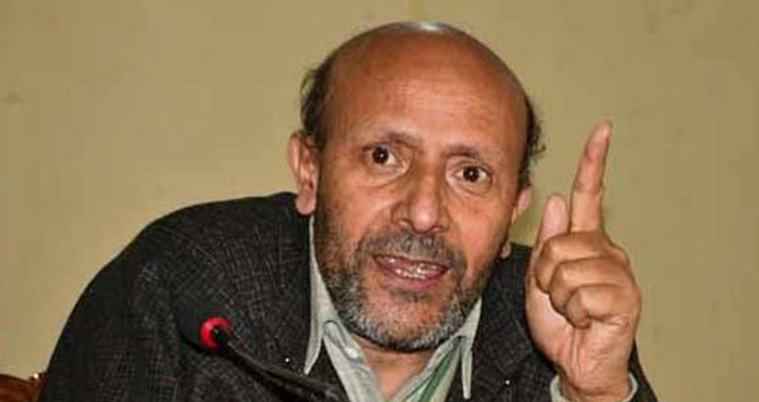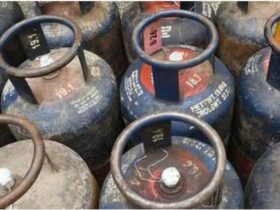By Dr.Manzoor Ahmad Yetoo
The carbon trade came about in response to the Kyoto Protocol. Signed in Kyoto, Japan, by some 180 countries in December 1997, the Kyoto protocol calls for 38 industrialized countries to reduce their greenhouse gas emissions between the years 2008 to 2012 to levels that are 5.2% lower than those of 1990.
Carbon is an element stored in fossil fuels such as coal and oil. When these fuels are burned, carbon dioxide is released and acts as what we term a “greenhouse gas”.
The idea behind carbon trading is quite similar to the trading of securities or commodities in a marketplace. Carbon would be given an economic value, allowing people, companies or nations to trade it. If a nation bought carbon, it would be buying the rights to burn it, and a nation selling carbon would be giving up its rights to burn it. The value of the carbon would be based on the ability of the country owning the carbon to store it or to prevent it from being released into the atmosphere. (The better you are at storing it, the more you can charge for it.)
A market would be created to facilitate the buying and selling of the rights to emit greenhouse gases. The industrialized nations for which reducing daunting task could buy the emission rights from another nation whose industries do not produce as much of these gases. The market for carbon is possible because the goal of the Kyoto Protocol is to reduce emissions as a collective.
On the one hand, carbon trading seems like a win-win situation: greenhouse gas emissions may be reduced while some countries reap economic benefit. On the other hand, critics of the idea suspect that some countries will exploit the trading system and the consequences will be negative. While carbon trading may have its merits, debate over this type of market is inevitable, since it involves finding a compromise between profit, equality and ecological concerns. What are Carbon Credits? A Carbon credit is a generic term for a certificate representing a reduction of one tone of greenhouse gasses (GHG) in the atmosphere. The international drive to lower GHG emissions has created a multi-billion-dollar global market for Carbon credit.. The World Bank recently announced that ‘Carbon market trading reached a record value of $176 billion in 2011 spurred on by secondary trading volumes.’ Where are carbon credits generated? How we manage energy today will determine the state of the world we will live in tomorrow. Those organizations responsible for carbon dioxide pollution offset their emissions by paying for renewable energy projects via the purchase of carbon credits. These credits then fund initiatives, such as reforestation, wind farms and methane capture projects. There are two Carbon Markets: Verified Carbon Market& compliance markets.
VERs Verified Emission Reduction credits VCS VERs are bought by companies such as Microsoft and Chevrolet who opt to offset their carbon footprint in a bid to meet CSR goals to create competitive advantage and increase share price Compliance Carbon Market. The compliance market is reserved for institutional trade EUAs – European Union Allowances CERs – Certified Emission Reduction credits EUAs and CERs are bought by large companies obliged to calculate and offset their carbon footprint every year to reach UN and Kyoto Protocol targets imposed by their respective governments.
Carbon credits remain a high-performing and legitimate commodity despite some criticism from elements of the financial sector – according to a Dubai-based expert from AGT Advanced Global Trading . ‘The easiest way is to carry out some research and ensure the broker and brokerage deals only in Carbon Credits that are backed by governing bodies such as the Verified Carbon Standard or Gold Standard Foundation.’ The VCS was founded in 2005 by business and environmental leaders who identified a need for greater quality assurance in voluntary markets. Its founding partners – the Climate Group, the International Emissions Trading Association (IETA) and the World Economic Forum – convened a team of global carbon market experts to draft the first VCS requirements and the World Business Council for Sustainable Development (WBCSD) joined the effort soon after by people based in ten different countries, a Foundation Board, a Technical Advisory Committee (TAC), more than 80 NGO supporters, a roster of industry experts, UN accredited auditors and registry platforms such as APX and Market. Voluntary Emission Reductions (VERs) Carbon Credits enable businesses from all sectors to offset their carbon emissions and make a measurable contribution towards environmental projects. The list of entities that engage in voluntary carbon trading includes small businesses in the public and private sector, universities and other educational bodies, charities and also individuals. Thus, Carbon Credits are now of legitimate interest to every segment of society, on both a personal and organizational level. Some joke it’s like selling fresh air – and in ways it is – but this Carbon Credit certificate is a freely tradable commodity similar to any other, such as gold, oil or coffee beans. Once a Carbon Credit is verified it is valued at the market price, which moves up and down the same way as any other, depending upon the demand and supply conditions at the time. Investors who have purchased AGT Carbon Credits over the past few years have certainly been smiling about their returns with holders of Carbon Credits in 2012 seeing their investment increase in value by 30.2 per cent in 2011 – And 2010’s investors made over 22 per cent. With companies and governments continuing to trading Some of the world’s top organizations are getting involved. In early 2012 Microsoft announced its quest for carbon neutrality by making data centres, air travel and offices meet targets by making every unit of the company accountable for its use of energy and the amount of carbon it generates. One of the world’s largest retailers, Marks and Spencer, has become carbon neutral and even the Canadian Olympic team offsets its emissions. In motorsport, Abu Dhabi Desert Challenge in March, 2012, led the way by signing a deal to offset any environmental damage from the 2012 event and the Lotus F1 Team is committed to carbon neutrality – all contributing to the increased profile and high demand for voluntarily buying and retiring Carbon Credits for the good of the planet, which in turn drives the market for verified Carbon Credits
(The author is an expert in environment ,project & waste Management, occupational safety& health & pollution control and empanelled expert for Indo European chamber of commerce and industry).
(You may reach him at manzooryetoo@yahoo.co.in)

















Leave a Reply